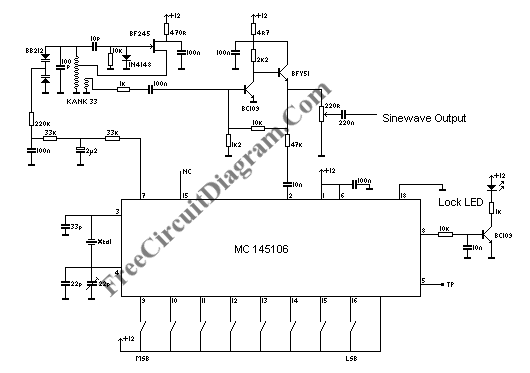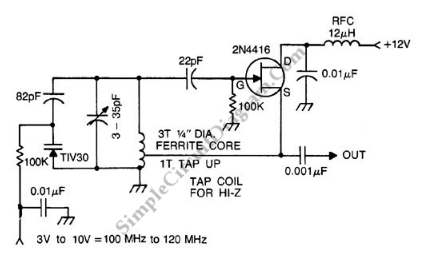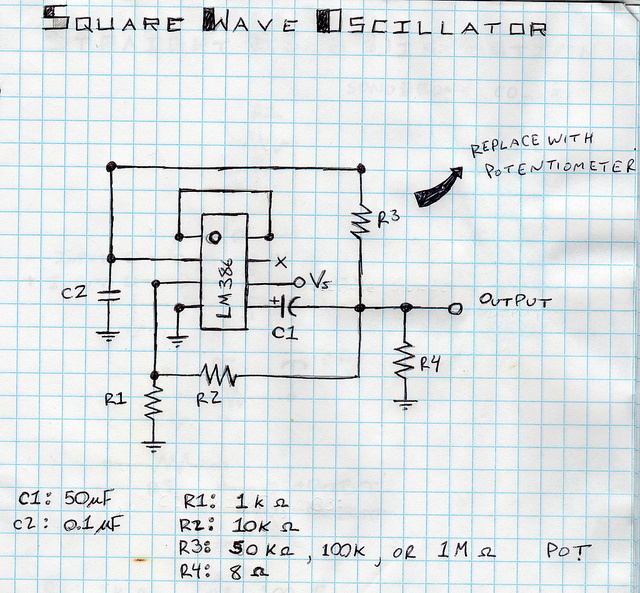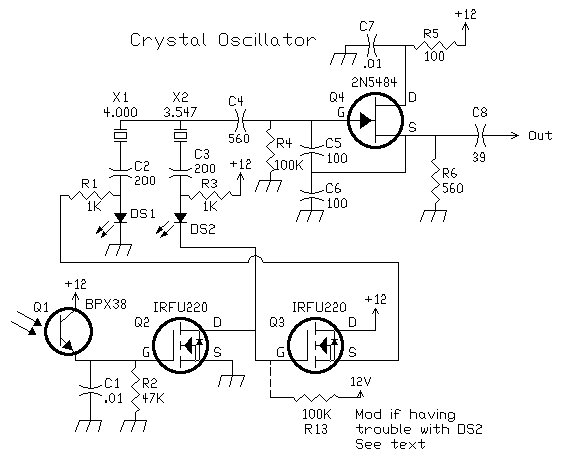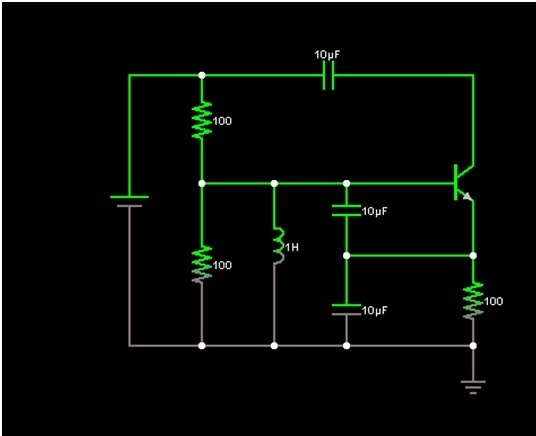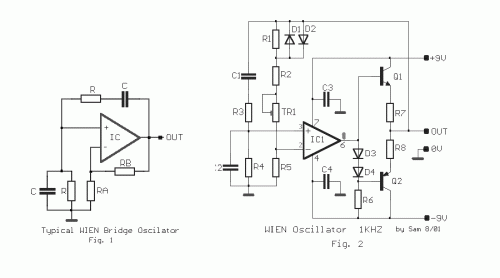
100MHz Varicap Oscillator
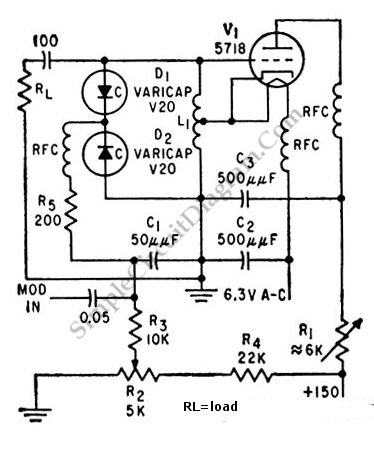
This is a 100 MHz varicap oscillator circuit. It can provide modulation signals of less than 28 V and a frequency deviation of 28 MHz peak-to-peak.
The 100 MHz varicap oscillator circuit utilizes a varactor diode, which is a semiconductor device that exhibits a variable capacitance as a function of the applied reverse voltage. This property is leveraged in the oscillator design to achieve frequency modulation. The circuit typically comprises an LC tank circuit, where the inductor and the varicap diode form a resonant circuit capable of oscillating at the desired frequency.
In this configuration, the varicap diode is reverse-biased, allowing its capacitance to change with the voltage applied across it. By modulating this voltage, the frequency of the oscillation can be varied, achieving the desired frequency deviation of 28 MHz peak-to-peak. The output signal can be further amplified using an RF amplifier stage to ensure that the modulation signals are adequate for transmission or further processing.
The power supply for the circuit is designed to provide a stable voltage of less than 28 V to ensure the proper operation of the varicap diode and other active components. Careful selection of the inductor and the varicap diode's characteristics is crucial in achieving the desired performance, including stability and linearity of the modulation.
Overall, the 100 MHz varicap oscillator circuit is a versatile solution for generating high-frequency modulation signals, suitable for various applications in communication systems and signal processing. Proper layout and shielding techniques should be employed in the PCB design to minimize noise and ensure signal integrity.This is a 100MHz Varicap Oscillator circuit. This circuit can provide modulation signals less than 28V and frequency deviation of 28 MHz peak-to-peak. This.. 🔗 External reference
The 100 MHz varicap oscillator circuit utilizes a varactor diode, which is a semiconductor device that exhibits a variable capacitance as a function of the applied reverse voltage. This property is leveraged in the oscillator design to achieve frequency modulation. The circuit typically comprises an LC tank circuit, where the inductor and the varicap diode form a resonant circuit capable of oscillating at the desired frequency.
In this configuration, the varicap diode is reverse-biased, allowing its capacitance to change with the voltage applied across it. By modulating this voltage, the frequency of the oscillation can be varied, achieving the desired frequency deviation of 28 MHz peak-to-peak. The output signal can be further amplified using an RF amplifier stage to ensure that the modulation signals are adequate for transmission or further processing.
The power supply for the circuit is designed to provide a stable voltage of less than 28 V to ensure the proper operation of the varicap diode and other active components. Careful selection of the inductor and the varicap diode's characteristics is crucial in achieving the desired performance, including stability and linearity of the modulation.
Overall, the 100 MHz varicap oscillator circuit is a versatile solution for generating high-frequency modulation signals, suitable for various applications in communication systems and signal processing. Proper layout and shielding techniques should be employed in the PCB design to minimize noise and ensure signal integrity.This is a 100MHz Varicap Oscillator circuit. This circuit can provide modulation signals less than 28V and frequency deviation of 28 MHz peak-to-peak. This.. 🔗 External reference
